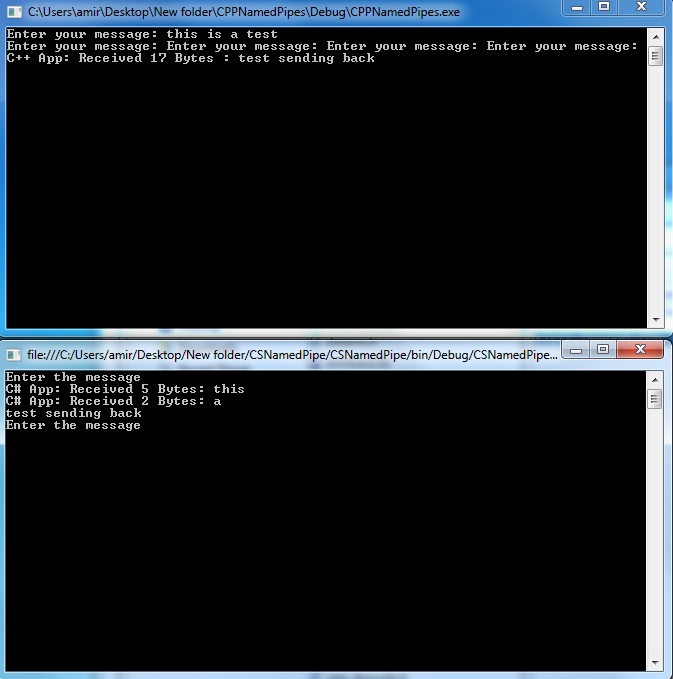-
C Program For Ipc Using Pipes카테고리 없음 2020. 3. 4. 01:29
An example showing a system connecting many personal computers over the Internet using inter-process network communicationIn, inter-process communication or interprocess communication ( IPC) refers specifically to the mechanisms an provides to allow the to manage shared data. Typically, applications can use IPC, categorized as, where the client requests data and the server responds to client requests. Many applications are both clients and servers, as commonly seen in. Methods for doing IPC are divided into categories which vary based on, such as and requirements, and system circumstances, such as and.IPC is very important to the design process for. Microkernels reduce the number of functionalities provided by the kernel. Those functionalities are then obtained by communicating with servers via IPC, increasing drastically the number of IPC compared to a regular monolithic kernel. 's (previously known as Interapplication Communications (IAC)).
for Linux (open source) and various DSP and general purpose processors under. The 's Mach Ports. 's, (COM), , (DCOM), (DDE), (OLE), and (WCF). 's., and. 's messages. 's message queues, semaphores, and shared memory.
Open binder. 's PPS (Persistent Publish/Subscribe) serviceDistributed object models The following are platform or programming language specific-APIs that use IPC, but do not themselves implement it.
C Program To Implement Ipc Using Pipes

Aidanrh7, you raise a good question: Won't closing the pipe preemptively (i.e. In the child process) prevent the child processes from communicating? In short, the answer is no. I'm unfamiliar with the inner mechanisms of dup2; however, with regard to this program, it effectively makes the pipe access points in the child processes unnecessary. This is because the pipe resides in the kernel's address space. So, for example, when you redirect the standard output of ps in child process 1 using dup2, the pipe access points in the child's address space are no longer needed; the binary executed by execlp will direct its standard output to the write-end of the pipe.It's worth noting that my understanding of this topic is limited; this is simply how it makes sense to me. Hopefully, someone more knowledgeable can come along and offer a proper explanation.
I figured I'd offer a simple explanation that might be helpful to someone else who comes along wondering the same thing as you.More about pipes in Linux:More examples of redirection:More about dup2:Why you should close pipes:. The answer to your question is that inside each process, only one end of one pipe will be written to or read from. The side that will be written to/ read from is duped, everything else is closed. Closing simply means that the fd that was once associated with a given object(in this case the read or write end of a pipe), will be released so that it no longer points to that object in question. The end that was duped, will already have been assigned, either 0 (for stdin) or 1(for stdout), so that either 0 or 1 will be pointing to that end.

C Program For Ipc Using Pipes Free
Hence, the need to release the original fd that was pointing to the end in question.Note that instead of using dup2, you could also use close and dup as and alternativeSodup2(pipe20, 0);can also be achieved byclose(0);dup(pipe20).